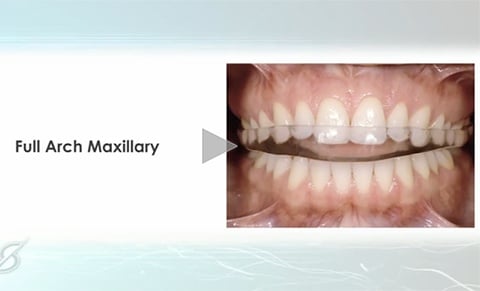Options for Determining Vertical Dimension: Part I
By Greggory Kinzer on July 9, 2018 |In a previous article, I discussed the concept of using rest position to determine the correct vertical dimension when restoring patients. In reality, this concept typically works well for edentulous patients but has limitations for our dentate patients.

The following will address and discuss some of the philosophies that can be used to determine the correct VDO.
Trial appliance
Typically, with this protocol a patient is asked to wear an acrylic appliance for three months, as a way to evaluate if the desired vertical dimension could be tolerated. The rationale behind this method is that the patient will experience pain if the vertical dimension is not acceptable.
However, except in a few patients with temporomandibular joint problems, altering vertical dimension does not produce pain. Although the appliance may be very useful to determine other elements of treatment or to aid in muscle deprogramming, it does not provide specific information regarding vertical dimension.
Measurements using the Cementoenamel Junction
Another method to determine vertical dimension that has been described is to measure from the cementoenamel junction or gingival margins of the maxillary central incisors to the CEJ or gingival margins of the mandibular central incisors. This distance is then compared to the 18-20mm average distance seen in a dentition of unworn teeth and a Class I occlusion. If this distance is less than 18mm, it probably indicates a loss of vertical dimension and is, therefore, a rationale for increasing the VDO.
The primary flaw in this approach is that the anterior teeth do not establish the VDO; the length of the ramus and the eruption of the posterior teeth establish it. Measuring the distance between the CEJ or gingival margins merely represents the amount of anterior tooth eruption, not the vertical dimension of occlusion. Indeed, it is possible to have an extremely diminished CEJ-to-CEJ distance in the anterior and a perfectly normal vertical dimension of occlusion.
This situation commonly occurs in patients with severe anterior tooth wear and no posterior tooth. Most clinicians examine the worn anterior teeth and decide to open the bite to gain space for restoration, when in fact the patient could be treated at the existing vertical dimension by intruding the worn anterior teeth or crown lengthening them to correct the gingival levels. As a general rule, it is highly unlikely that the patient has lost vertical dimension if the posterior teeth are present, unworn, and in occlusion. If space to restore the anterior teeth is lacking, it is also likely that orthodontics or crown lengthening would allow the patient to be treated without the need to treat their posterior teeth.
Transcutaneous Electrical Neural Stimulation
A third method to determine vertical dimension that has also been used for decades is transcutaneous electrical neural stimulation (TENS). With this approach, electrodes are applied over the coronoid notch and a mild, cyclic electrical current is generated to stimulate contraction of the muscles of mastication by way of the cranial nerves. The surface electrical activity of the temporalis, masseter and digastric muscles is recorded electromyographically, and a jaw-tracking device evaluates the position of the mandible relative to the maxilla.
A baseline electromyographic reading is taken before any muscle relaxation. The TENS unit is then programmed to relax the muscles of mastication and the electrical activity of the muscles is again evaluated. Neuromuscular rest is achieved when the elevator muscles are at their lowest level of activity without an increase in the electrical activity of the digastric muscles. This neuromuscular rest position is thought to be the starting point for the building of the occlusion. The operator closes up from this position for the “new” amount of freeway space, effectively using the combination of neuromuscular rest and freeway space to determine the new occlusal vertical dimension.
The primary flaws in this approach relate to the neuromuscular adaptability of patients. As described earlier, the resting electrical activity of muscles, like the freeway space, relapses to pre- treatment levels within one to four months post-treatment. Moreover, this approach often results in a more open vertical dimension than the patient's existing vertical dimension, which can lead to the need for extensive restorative dentistry and extremely large teeth simply to accommodate the vertical dimension dictated by the TENS device.
(Click this link for more dentistry articles by Dr. Gregg Kinzer.)
Gregg Kinzer, D.D.S., M.S., Spear Faculty and Contributing Author
FREE COURSE: Appliance Choices for Wear Patients
Now that you've read about anterior bite planes, learn about even more appliance choices. In this free course from the Spear Online Course Library, you will learn how to design and build appropriate appliances for your wear patients.
WATCH NOW